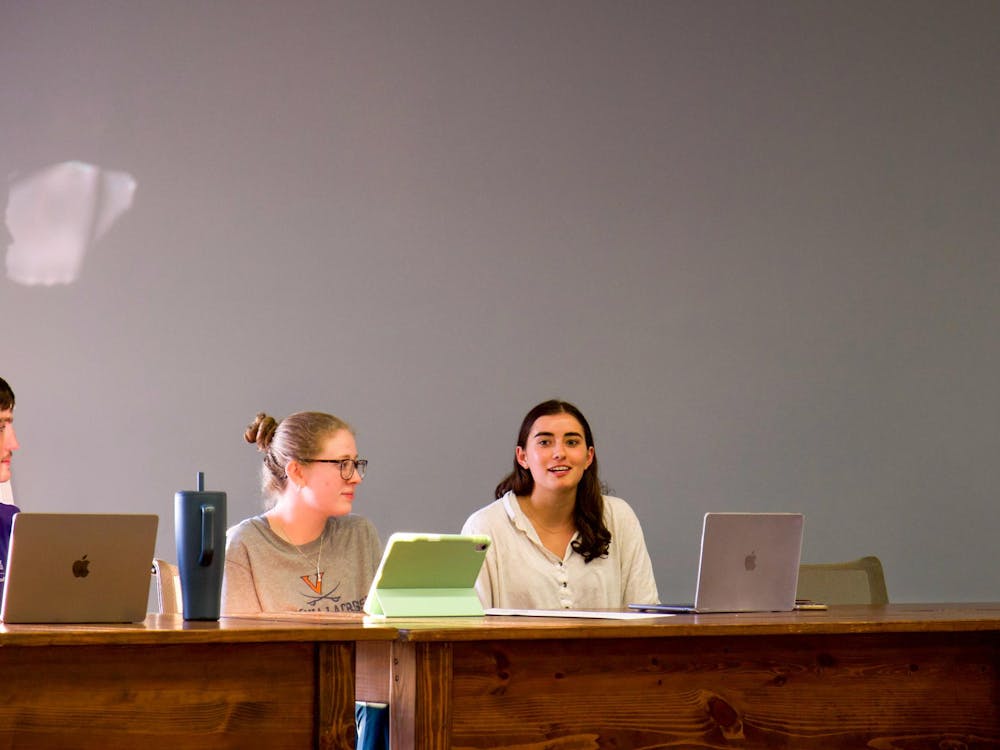In just a few years, students strolling on Grounds -- and not just those on the Lawn -- may notice themselves literally stepping on or passing by history as a result of a project recently approved by the Board of Visitors.
The Demolished Building Recognition Program -- an idea of President John T. Casteen, III, according to Colette Sheehy, University vice president for management and budget -- will result in the placement of commemorative plaques around Grounds indicating the place and purpose of historic buildings.
Sheehy said the project provides a means of preserving institutional memory.
"The idea of the program is to memorialize some of those buildings, the more significant structures that once existed but no longer exist now," she said.
The University has not yet established official criteria to determine which former buildings are significant enough to deserve a plaque or how many plaques will be placed, Sheehy said. Several locations on Grounds, however, will undoubtedly receive a plaque, she said, including the annex that used to be on the north side of the Rotunda before a fire destroyed it.
Alexander Gilliam, secretary of the Board and special assistant to the president, said another building likely to be commemorated with a plaque is Miller Hall, which once stood in the space now occupied by the Special Collections Library. The building was originally a chemistry building, Gilliam said, and later became a biology building before being transformed into an admissions office.
In addition to commemorating buildings long gone, the project may answer curious students' questions about the scenery they see while walking around Grounds, as traces of some historic buildings remain. For example, looking across University Avenue from the portion of the Corner near Baja Bean, Gilliam said, one can see a series of steps leading "to nowhere." These steps were once the front of the University dispensary and infirmary, partially built from bricks taken from the Rotunda's annex and torn down around the time of World War I.
The project may also recognize sites important to early student life. Temperance Hall, "the 19th-century forerunner of Newcomb Hall," Gilliam said, was located where the University Medical Center and Medical School were expanded before its destruction around the time of the World War I. General Cocke, an ally of Thomas Jefferson, led a campaign against drinking and designated the building as a location where students could socialize without partaking in alcohol consumption, Gilliam noted. It also housed the first meeting rooms for fraternities before they were given houses elsewhere on Grounds.
Similarly, a series of buildings called Dawson's Row, which once served the University community as dormitories and existed near the current site of the Office of African American Affairs, Gilliam said, may also be marked with a plaque.
Though these and other buildings have yet to be officially confirmed as deserving of recognition, one plaque is already in place, Gilliam said. The "anatomical amphitheater," the only Jefferson-designed building no longer standing, was demolished to make space for Alderman Library. That building, which was once home to preserved cadavers and other specimens reserved for study, was located near the Alderman bus stop and is today commemorated with four stones marking the corners of the building's foundation, as well as with a plaque in the middle reading, "On this site stood the first building devoted solely to medical instruction at the University of Virginia."
The cost of the plaque recognition program is expected to be minimal and will take several years to complete, Gilliam and Sheehy said. The plaques will be similar to those already found on new buildings, Sheehy said, which are made of slate and are engraved with the names of the current president and rector of the University, as well as the architecture firm that designed the structure.






